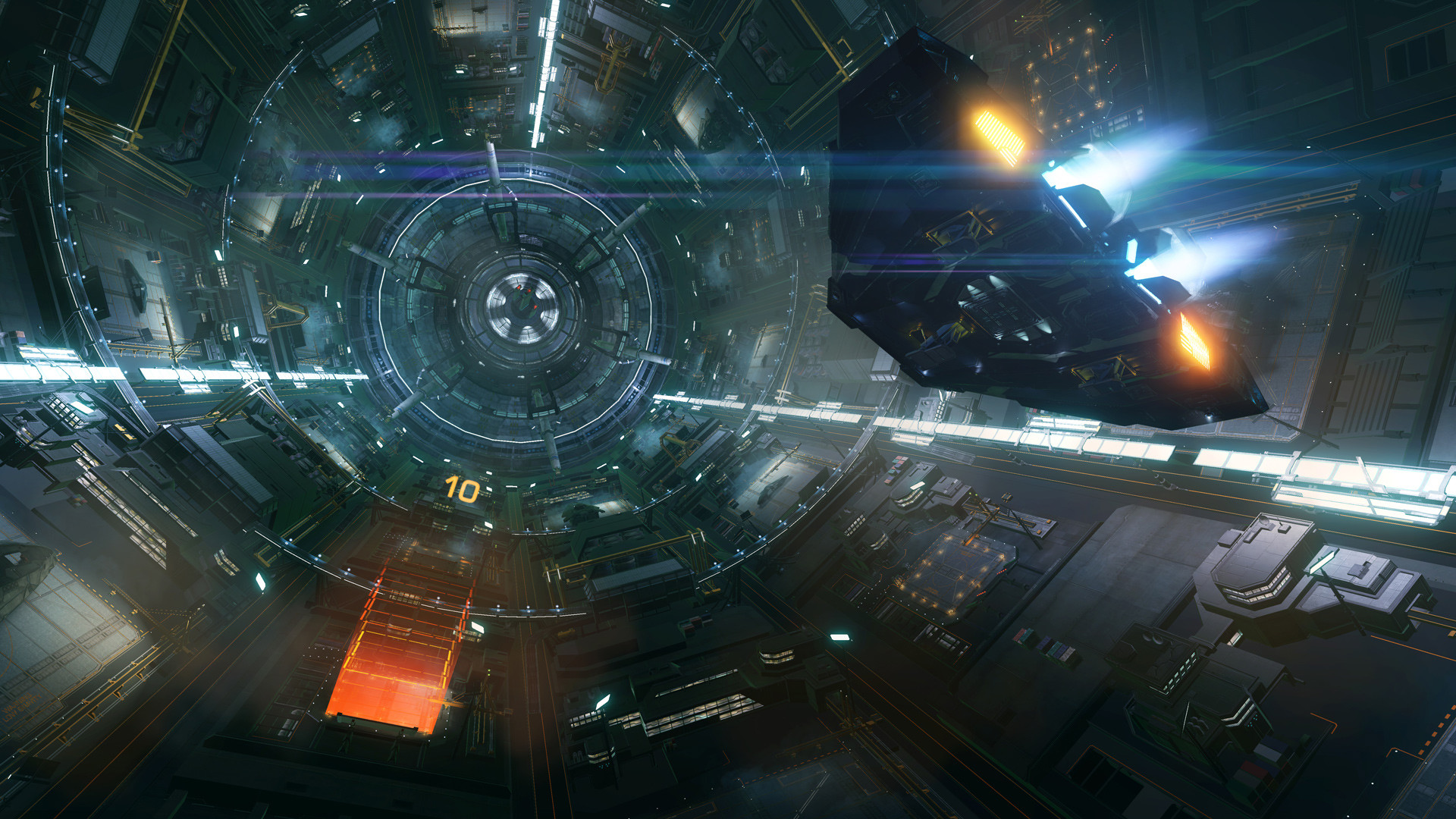I still remember when I first saw the space-trading computer game Elite. It was a friend’s house and he showed me this snazzy new game on his Commodore 64 computer. I was totally blown away. Even though the graphics were extremely primitive compared to what we’re used today, the game just looked great. It was also not just one of those simple and linear games we were used to, but you could explore a whole universe containing countless system.
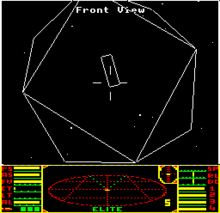
Each system had a trading station, there was information on each system’s inhabitants, its government type and more. Probably because everything was a bit vague and because of the simple graphics you really had to fill in the rest with your own creativity. The game also allowed you to play how you wanted. You could be a peaceful trader, a smuggler, a pirate, a bounty hunter. At this time there was no game like this. It was unique.
Eventually I got a copy of Elite for the PC and played it for a while, but at this point some of the magic had waned. I also had always trouble with games that forced me to set my own goals. But regardless I always had a soft spot for the game and its sequel Frontier. I especially enjoyed a set of short stories which came with the box for Frontier: Elite II. There seemed to be a whole gaming universe out there, which I would have loved to explore outside of the confines of a computer game.

In 2012 David Braben, one of the two initial programmers of Elite, started a Kickstarter campaign for Elite: Dangerous, basically a new version of the original game, which modern graphics, a more realistic flight model, and 400 billion star systems to explore. The Kickstarter project was a huge success and in 2014 the game was released. Since then its developers have constantly supported it with updates and it’s currently one of the most impressive space simulation games out there.
I was not the only one who thought that there should be other ways to explore this massive universe besides the computer game. In fact there were several authorized Elite: Dangerous RPGs for a while. The first was created by one very enthusiastic fan and from what I heard it was extremely detailed and complex and obviously not what Frontier Developments (the company who developed the computer game) expected. So eventually the gave permission to create a second RPG to Spidermind Games. Today I want to have a closer look at this second official Elite Dangerous RPG. Modiphius is acting as publisher for E:DRPG and they graciously provided me with a review copy which is basis of this review.
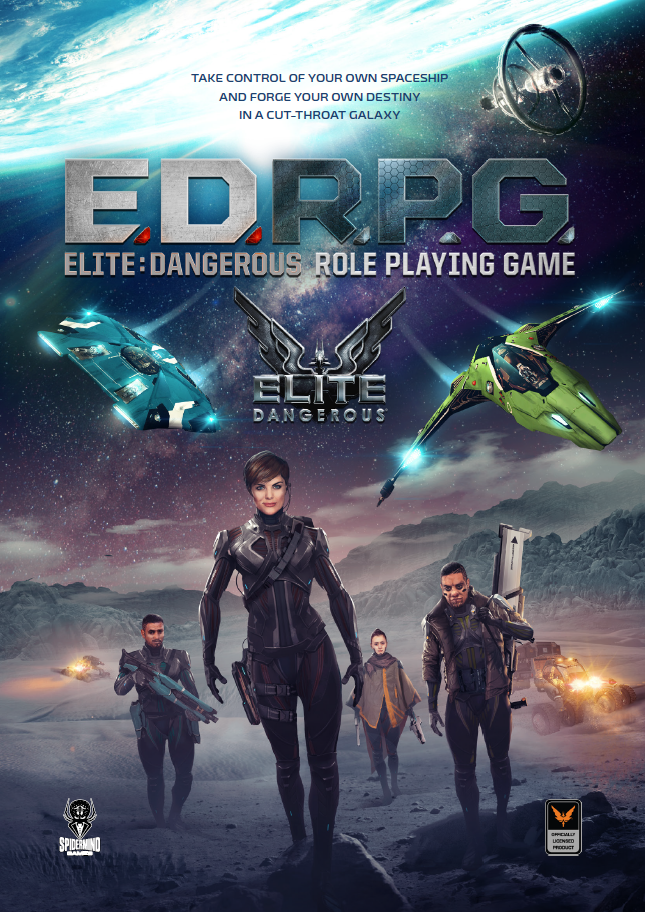
The 370-paged Elite: Dangerous Roleplaying Game is a massive tome of a book. It has a full-color interior and its layout and artwork are on par with other products of the publisher. The art style is mostly consistent, but there are some peculiar choices like a few pieces of black-and-white art which feel a bit out of place. But that’s only a minor quibble. Overall the book makes a great first impression.
The E:DRPG uses a simple d10 roll-over mechanic for task resolution. So in most cases you roll a ten-sided die, add the relevant skill bonus and compare the result with a difficulty number set by the GM. That’s nothing too fancy, but it’s also a proven mechanic which we’ve seen in countless games. The skills themselves are actually ranked 0 to 100 which skill bonuses being equal to 1/10th of the Skill score. This adds a bit more granularity to the skills, although I am not sure if this was actually necessary.
Character creation in E:DRPG is a six-step-process. You start by deciding on the character’s rank (which is comparable to a “level” in other RPGs). In order to give the game a more Elite feel, the ranks are similar to the combat ranks you get in the computer game: Harmless, Mostly Harmless, Novice, Competent, Expert, Master, Dangerous, Deadly, and Elite. Starting characters are usually Harmless.
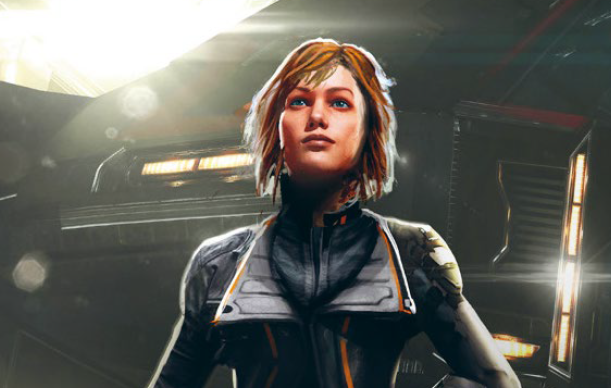
Before choosing four backgrounds, each character gets a Skill score of ten in each of the skills. Backgrounds define what your character has done before and include options like Accountant, Born on the Streets, Freedom Fighter, Officer, Sports College, and Wise Guy. A special case is the Partner background which lets you create a travel companion like a best friend, or a husband/wife. Each background grants you bonuses to some your skills and some come with special Enhancements, bonuses which set you further apart from the average human (like tough or strong). You also get one background for free in addition to your four choices: Pilot Trained. So every player has some skill with flying a personal space ship.
Personally I prefer this kind of character creation over just picking skills, since it helps to create an interesting backstory. How did the kid born on the streets end up with Army training? Why did the Lave Radio Host become a Monk/Nun? This also makes sure that you get all the necessary skills for the type of character you intended to play.
After choosing your backgrounds, you pick three Karma Capabilities and receive Escape Death for free. These Capabilities are fueled by a meta currency called – surprise, surprise – Karma. Aside from paying for Karma Capabilities you can also use your Karma points to reroll a 1 you rolled on a Skill check. Each character starts with 10 of these points and you regain one Karma point after a full night’s sleep.
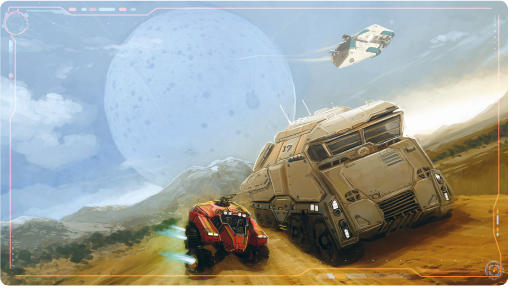
Examples for Karma Capabilities are Duck! (grants you a temporary +2 bonus to dodging), Riposte (which allows you to make counter attacks under certain circumstances), and Ghost (you get a +4 on Stealth while shadowing someone).
Last but not least, you may improve ten of your character’s skills, write down a characters starting Endurance and Karma on your character sheet, calculate all Skill bonuses, write down your two Defences (Defence(Dodge) is equal your Dodge Bonus, while Defence(Parry) is equal to your Parry bonus) plus your Initiative (which is equal to your Tactics bonus), and choose your starting equipment. The last step is of special importance since you then have to pick your own space ship! Experienced players may – with GM permission – even create their own customized ship.
This is probably one of the biggest draws of the Elite: Dangerous Roleplaying Game: every player owns a small spaceship of their own. This also solves one of the issues many Scifi roleplaying games with space travel have. Usually the group own one space ship, which serves as a kind of home base, but which also may be involved in chases, dogfights, etc. This might lead to the situation, that one or two of the players are highly involved in an activity (like space combat) while the rest of the party sits around bored. If everyone owns their own small space ship, this gets much less of a problem.
The rules of the game are surprisingly light. I explained the skill system above and that’s basically everything you need to run all kinds of non-combat encounters. The combat rules for combats between characters is pretty simple and straightforward as well. You can move up to 10 meters per turn, and perform a single action. This action may be an attack, drawing a weapon, interacting with an object, moving another 10 meters, or reload a weapon.
Defence actions occur during the enemies turn. Successful parries allow you to immediately counter-attack. Damage caused by weapons is subtracted from the target’s Endurance, although armour production first reduces the damage caused. If you roll a 10 while determining damage, the target gets knocked over. In addition to that there are a few special rules for missiles, grenades, but the whole personal combat chapter is consists of just about 10 pages.
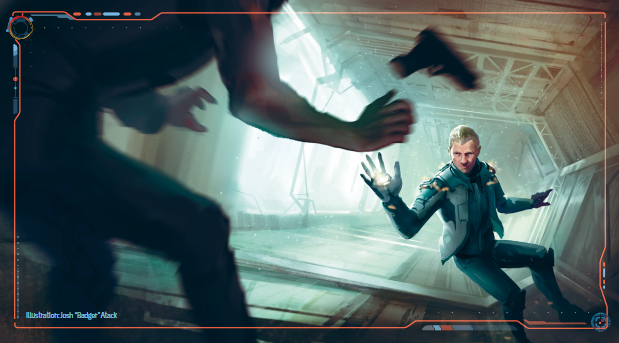
Space Combat is a totally different beast though. Since space ships in Elite Dangerous can be quite detailed, the rules regarding space combat are much more elaborate. You have to handle shield banks, the relative positions between attacker and target are important, internal hits change your ships combat capabilities, and overall there are much more things you have to consider. Luckily the rules explain every aspect in a simple and clear way. If you are a fan of rules-light systems, E:DRPG may be a bit too detailed in that regard, but you shouldn’t have any issues if you are used to a more complex RPGs like Pathfinder or board games like Battletech.
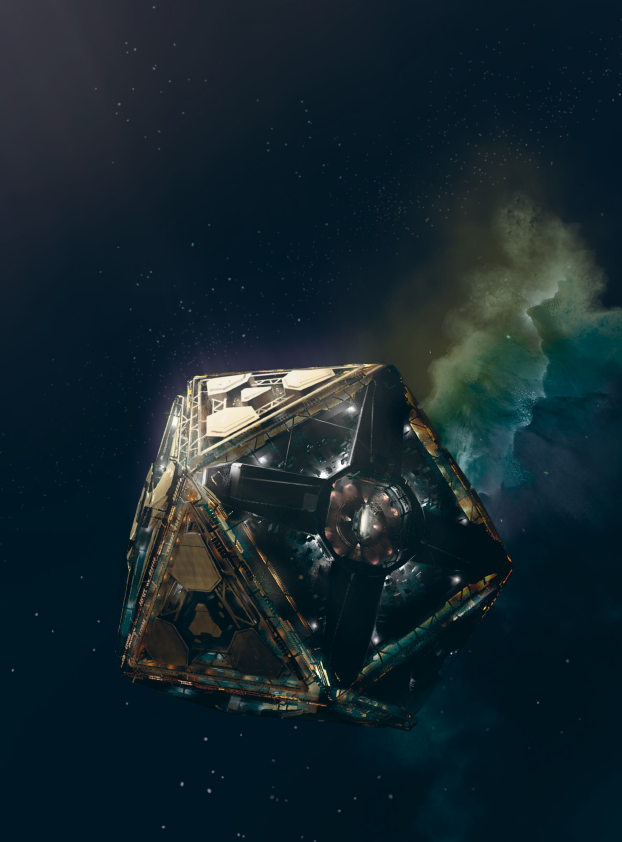
Let’s have a look at the Elite: Dangerous setting now. As I mentioned before the game is set into our own Milky Way, but in the 34th century. There are several Interstellar powers that compete for supremacy in human-settled space: The Federation, which controls Earth, the cradle of humanity, and which describes itself as a representative democracy, but corporate interests often trump the needs of the people. In a lot of ways, the Federation seems like a capitalists wet dream.
The Empire is a feudal dictatorship ruled by an Emperor and their senators. The Empire is a bit smaller than the Federation but economically there’s not a huge difference between the two. Surprisingly the standards of living in the Empire are pretty good, which probably has something to do with their political system. Important people with influence and power are called clients. People can freely associate with those clients and in turn they provide for these people. The common people actually give their votes to clients, which in turn give the accumulated votes to a patron. In a way its similar to how things worked in Ancient Rome, if my history knowledge doesn’t fail me.
The third Interstellar power is the Alliance of Independent Systems. Over the centuries both the Federation and the Empire swallowed up many independent systems. This continued until in the 33rd century a bunch of revolutionaries managed to regain independence for their world, which then formed the seed of the Alliance.
In addition to these three powers there are also various, mostly corporate-owned independent systems, that basically fly under the radar.
Overall the Elite: Dangerous universe is a bit generic. One reason is that you don’t need that much background story for a space combat and space trading computer game to be fun. In a way it reminds me of the Traveller Third Imperium setting (which is – to be honest – much more detailed). The setting is meant as a canvas for the GM to paint their stories on. The E:DRPG setting actually does this pretty well. You have enough information to envision what kind of place the Milky Way in the 34th century is, but there’s basically endless space for your own ideas.
The equipment chapter of the book (which is pretty extensive) also helps to set the universe’s flavor. It contains a pretty hefty amount of weapons, armor, tools, cyberware, cosmetics, communication devices, and medical supplies. Most equipment also provides some mechanical advantages when used. What I found particularly interesting was that clothing and cosmetics grant bonuses to a character’s Social Factor. That’s something I haven’t really expected in an Elite: Dangerous game.
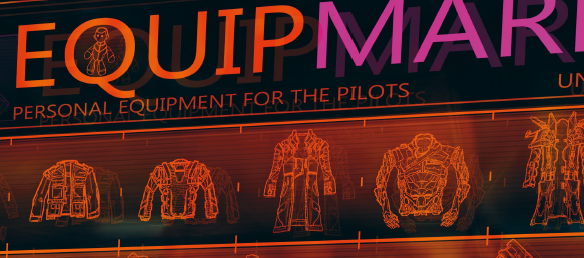
Spaceships are THE highlight of the E:DRPG and they are probably the main cause, why people will pick it up. The E:D computer game is all about owning your own space ship, travelling between the stars, perhaps even be part of a faction, without ever losing one’s independence. It’s all about forging one’s destiny in space.
What I really love about the space ships in both the computer game and in the E:DRPG is that they all have a pretty iconic look, they can be piloted by a crew of one, and there are countless customization options. You need better weapons, but less cargo space? No problem! You want to mine asteroids for precious minerals and ores? Just mount some Mining Lasers and install a Refinery! From what I’ve seen basically all of the customization options from the computer game are included in the roleplaying game.
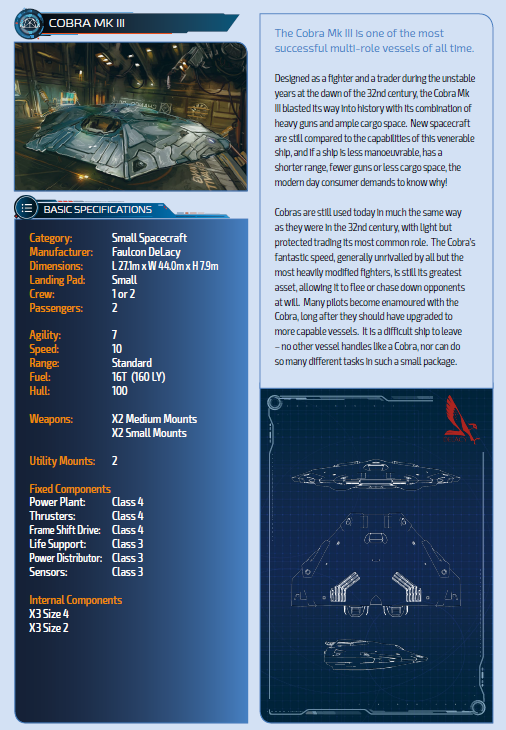
I posted the specs of the iconic Faulcon DeLacy Cobra Mk III above which alone has seven variant listed in the book. Of course you can also just use the basic hull and pick and choose the equipment you want to install. Of course you can’t just bolt any equipment onto any ship. It has to fit into the existing hardpoints and you have to keep any eye on power consumption. What I really like is that you’ve got a choice. You can either tinker to your heart’s content, or you can just pick one of the ship variants most suited to your needs.
For all your transportation needs on planetary surfaces E:DRPG has an extensive chapter on vehicles. Aside from he Scarab SRV known from the computer games, there are stats for other vehicles as well, like the Garriot Shielded Recon Quadbike, the Gangland Battlecar, an Imperial Avenger tank and the Barracuda Submersible. Like spaceships there are several variants per vehicle you can purchase.
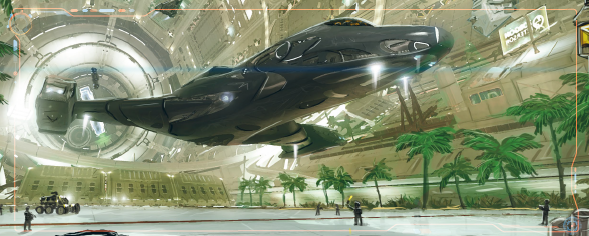
The GM section of the E:DRPG contains everything you expect from a modern RPG corebook. Aside from various rules and GM procedures which haven’t been covered in the other sections, yet, you get tips on how to run games with special themes, how to design campaigns, and how to handle certain in-game situations. Some of the information given is probably not new to the veteran GM, but can be quite handy, if the E:DRPG is the first tabletop roleplaying game you have picked up.
What I found quite interesting is that there are rules that allow characters to have some activities between adventures. The idea is that there are times when the player characters don’t spend any time together, but do some independent activities.
If you wish you can simulate Safe Trading, Asteroid Mining, Exploration, and Bounty Hunting with a couple of rolls. Characters with enough funds may actually even hire crews which handle these activities. I never thought about it, but mechanics like these actually make a lot of sense.
No tabletop roleplaying game would be complete without a bestiary and E:RPG is no exception. The “Opponents” chapter contains an extensive list of NPCs. But it’s the nature of games like E:DRPG that you often encounter those NPCs driving a ground vehicle or piloting a space ship. Luckily the game makes things extremely easy for you, by including stat block for NPCs of various scales. Aside from – for example – the Pirate, you also get a stat block for a Pirate Biker (including the stats for the bike), as well as a Pirate piloting a Sidewinder space ship! This way, the GM always has all the statistics needed for that NPC in one place.
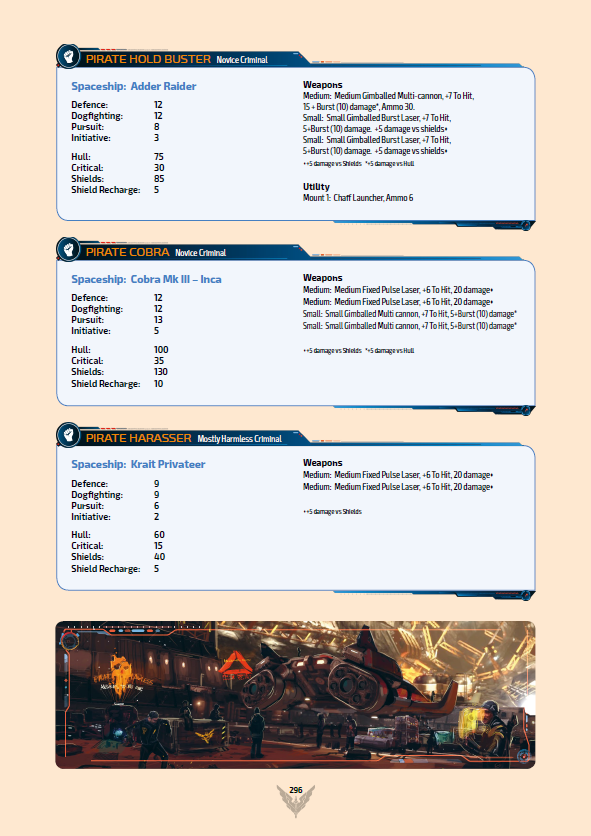
The bestiary also includes various alien creatures or genetically-modified Earth animals you might encounter during your travels through the Milky Way.
Since a book can’t possibly ship with details on billions of star systems, the ED:RPG has a Star System Generator which probably even rivals the one from Traveller. There are also multiple Mission Generators which are meant to provide GMs with ideas for his own adventures, or hooks to flesh out. There are tables for Military Missions, Espionage Missions, and Exploration Missions.
The book also contains various sheets including character sheets, and ship sheets, and a list of all the Kickstarter backers who supported the E:DRPG. Unfortunately there’s no index, and at least the PDF copy I had access to, lacked bookmarks. This doesn’t really make this a bad product, but with the level of polish the E:DRPG shows, you would have expected these kinds of details.
Overall the E:DRPG is a pretty solid Scifi roleplaying game based on a well-loved computer game franchise. The setting is perhaps a bit bland, but it has probably never been the focus of this game. If you pick up the Elite: Dangerous RPG, you do so because of the cool space ships! And on this front it more than delivers. The ships are as detailed as in the computer game and you get all the cool customization options. Space combat is highly detailed. Perhaps a bit too involved for my tastes, but that doesn’t make it a bad game. As I said at the beginning of this rather lengthy review the E:DRPG is a really good-looking product and it feels quite polished. If you are looking for a space-ship-centric RPG with a medium level of “crunch” and a setting you can easily make your own, look no further than the Elite: Dangerous Roleplaying Game.
The E:DRPG is currently available in print and digital forms. Modiphius sells the core book for about €44. This purchase includes the hardcover book plus an introductory adventure, a map and counters in PDF format. Alternatively you can go to DriveThruRPG to get a digital copy of the book which costs about $28. At the point of this writing, several sourcebooks for the game are available as well.

